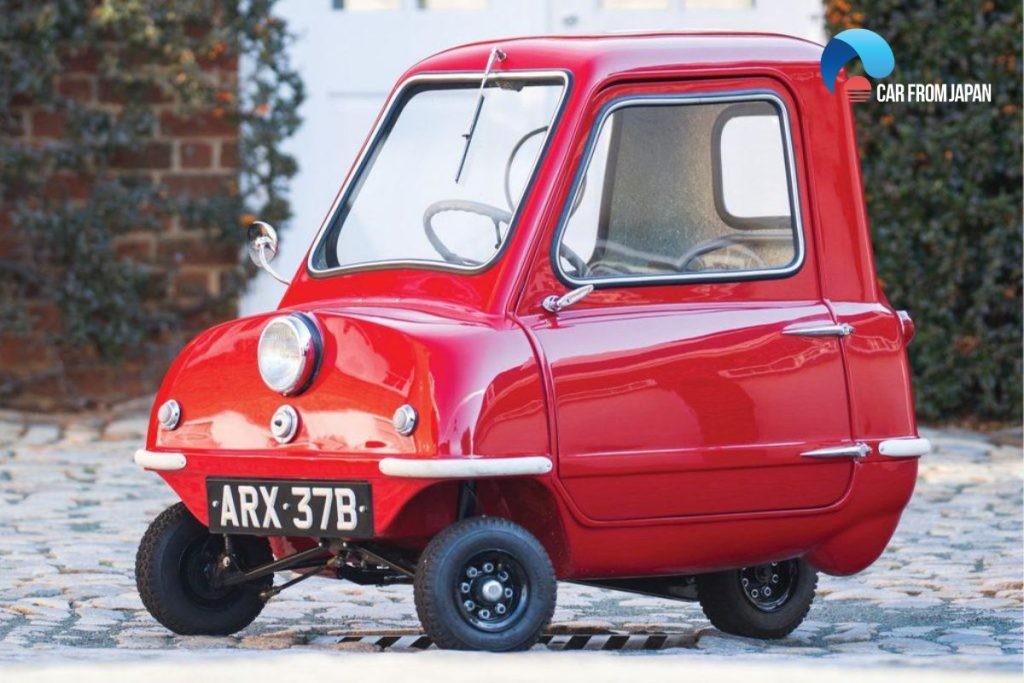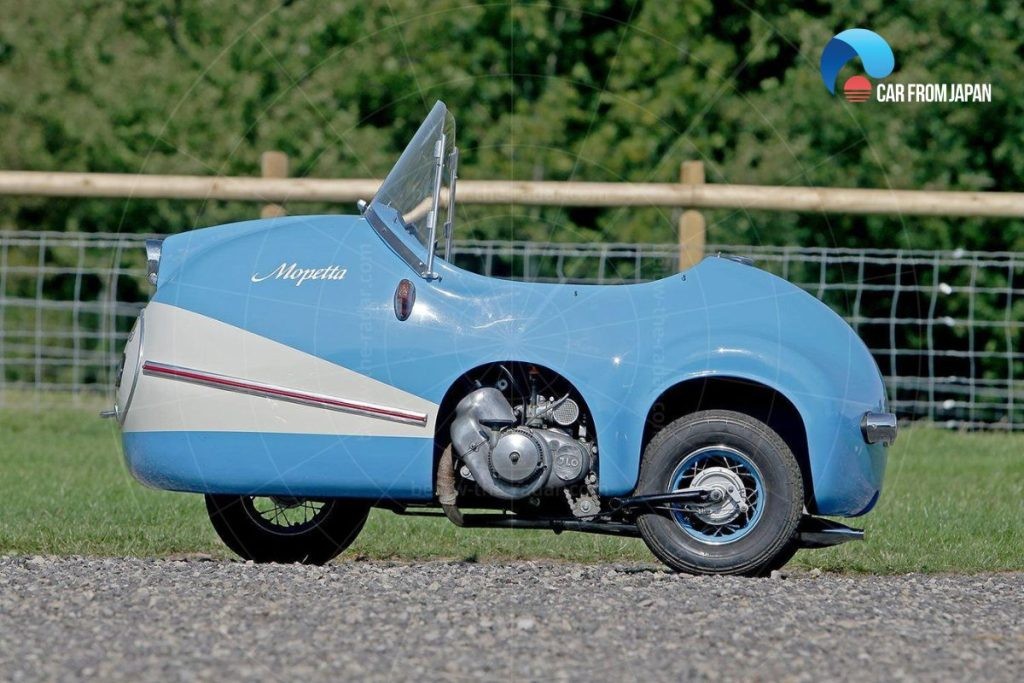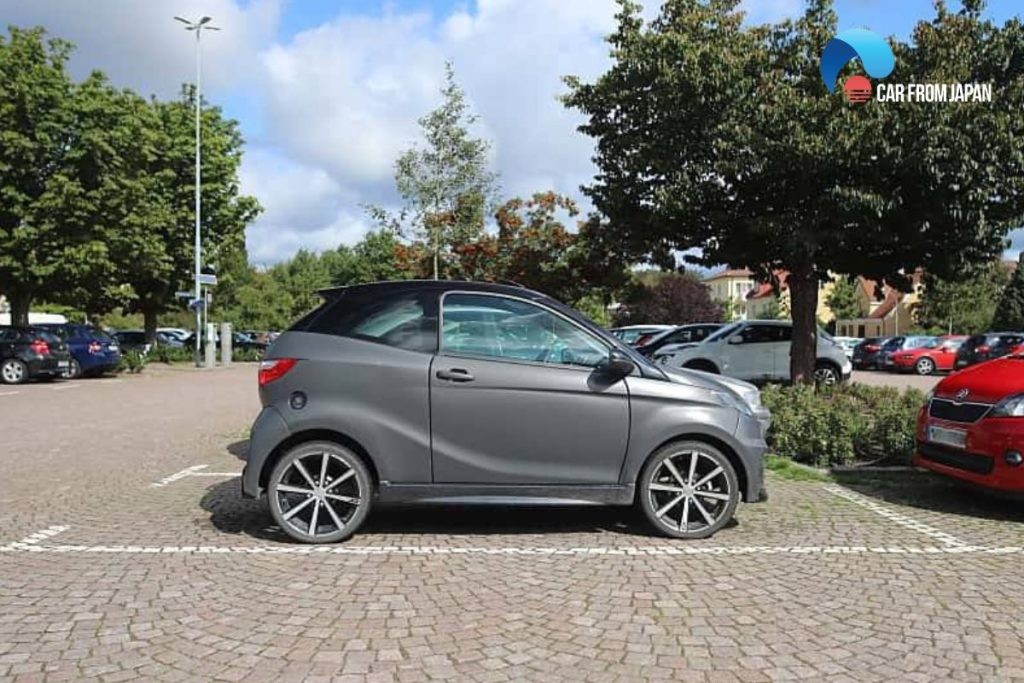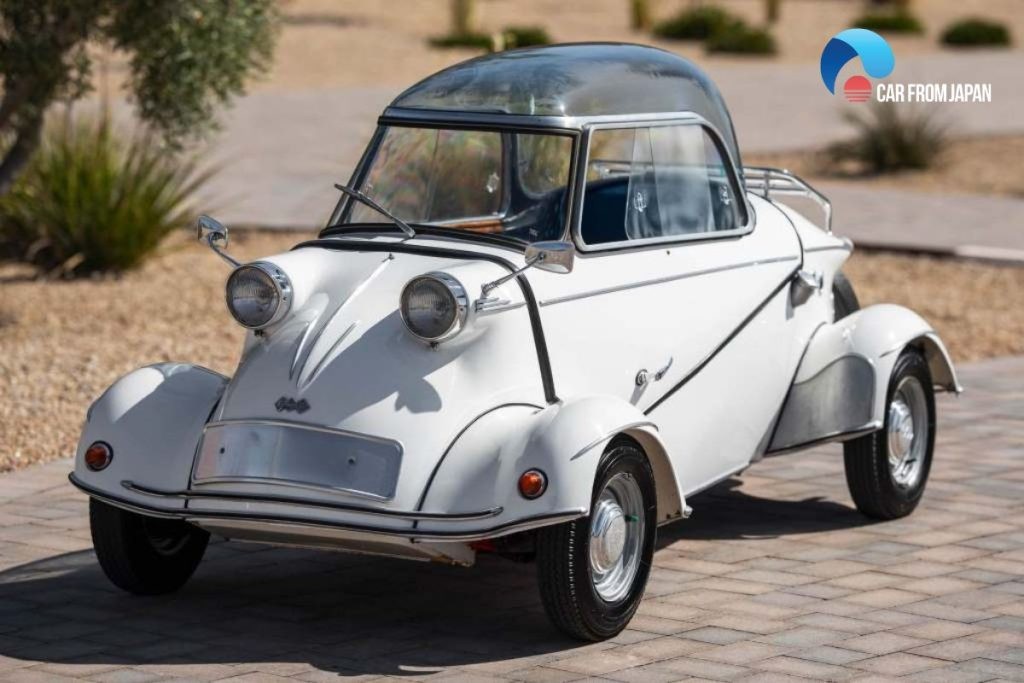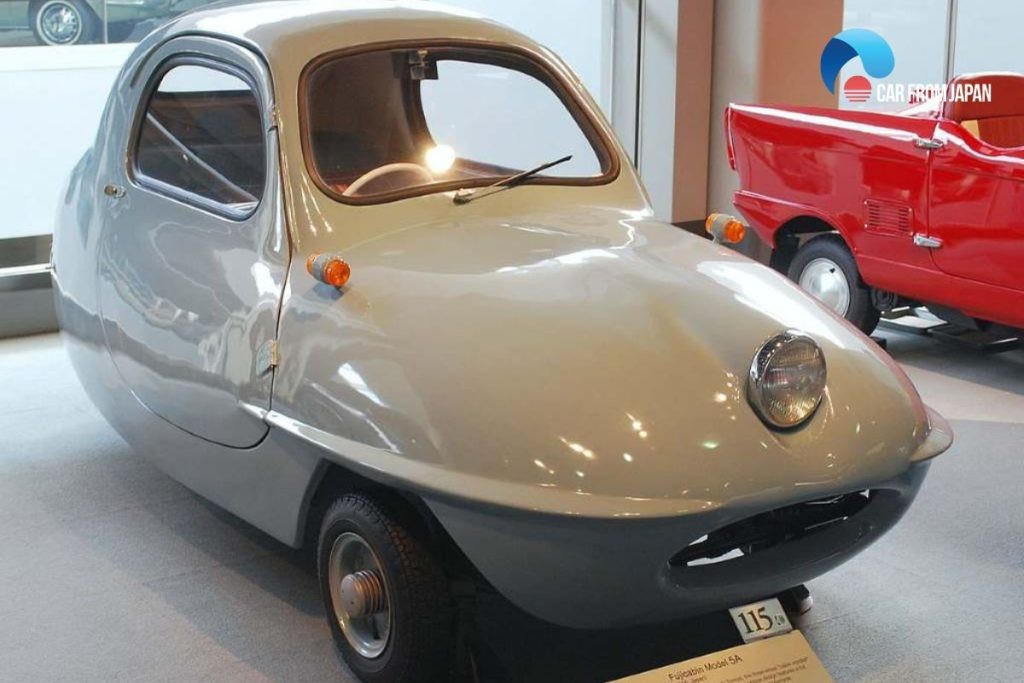Let’s embark on a fascinating journey to discover What Is The Slowest Car ever made. This exploration isn’t just about sluggish vehicles; it’s about appreciating automotive history and innovation in its most unconventional forms. At CARS.EDU.VN, we believe that every car, regardless of its speed, has a story to tell, offering unique insights into design, engineering, and the evolution of transportation. Discover surprisingly fuel-efficient vehicles, microcars, and unique automotive designs.
1. Unveiling the Reigning Champion: The Peel P50
The undisputed titleholder for the slowest car in the world goes to the Peel P50, a marvel of micro-engineering born in the 1960s. Manufactured by Peel Engineering on the Isle of Man, this tiny three-wheeler isn’t just slow; it’s a record-breaker, holding the Guinness World Record as the smallest production car ever made.
1.1. A Glimpse into the Peel P50’s Specifications
| Feature | Specification |
|---|---|
| Length | 54 inches (137 cm) |
| Top Speed | 28 mph (45 km/h) |
| Engine (Original) | 49cc moped unit |
| Power (Original) | 4.2 hp |
| Weight | 130 lbs (59 kg) |
| Seating | 1 passenger |
The Peel P50, the world’s smallest car, cruises through an urban environment.
1.2. The Peel P50: A History of Innovation
Introduced in 1962, the Peel P50 was designed as a city car, a personal mobility solution for navigating urban landscapes. Its diminutive size and quirky design quickly made it a sensation. Production ceased in 1969, but the P50’s legacy lived on, capturing the imagination of car enthusiasts and collectors worldwide.
1.3. A Modern Revival: The Electric Peel P50
In 2010, the Peel P50 was revived, with both petrol and electric versions hitting the market. While retaining the original’s charming aesthetics, the new models incorporate modern enhancements to the drivetrain, suspension, and steering. Notably, the modern Peel P50 features a reverse gear, a feature absent in the original, requiring drivers to physically maneuver the car.
2. Why So Slow? The Philosophy Behind Low-Speed Vehicles
The Peel P50’s snail-like pace might seem like a drawback, but it’s actually a design choice rooted in practicality and a unique philosophy.
2.1. Urban Mobility and Fuel Efficiency
The Peel P50 was conceived as a solution for congested city streets, prioritizing maneuverability and fuel efficiency over outright speed. Its compact size allows it to squeeze through tight spaces and park in areas inaccessible to larger vehicles. The electric version boasts impressive fuel economy, making it an environmentally friendly and cost-effective option for urban commuters.
2.2. The Joy of Slow Driving
Driving a slow car can be a surprisingly enjoyable experience. It encourages a more relaxed and mindful approach to driving, allowing you to savor the journey and appreciate the surroundings. It’s an antidote to the stress and frenzy of modern life, offering a chance to slow down and reconnect with the road.
2.3. A Statement of Individuality
Owning a Peel P50 is a statement in itself. It’s a conversation starter, a head-turner, and a testament to your unique taste and appreciation for automotive history. It’s a car that defies convention and celebrates individuality.
3. Contenders for the Crown: Other Remarkably Slow Cars
While the Peel P50 holds the title of the slowest car, several other vehicles have earned a place in the pantheon of low-speed automobiles.
3.1. Brütsch Mopetta: A Quirky Open-Top Microcar
Debuting in 1956, the Brütsch Mopetta is another example of microcar ingenuity. This open-topped, single-seat vehicle featured a unique configuration, with a single front wheel for steering and two rear wheels for propulsion. Its distinctive styling and rarity have made it a sought-after collectible.
The Brütsch Mopetta, a classic microcar with a single front wheel, on display.
3.2. Aixam Coupe: A License-Free Option for Young Drivers
The Aixam Coupe is a two-seater quadricycle that’s particularly popular in Europe. What makes it unique is that in some countries, like the UK, it can be driven without a full driver’s license, making it an attractive option for young people. However, its 5.6 horsepower diesel engine limits its top speed to a modest 30 mph.
The Aixam Coupe, a quadricycle coupe ideal for short, low-speed trips.
3.3. FMR TG500: A Bubble Car with a Racing Pedigree
The FMR TG500, also known as the Tiger, was a sporty version of the Messerschmitt Kabinenroller bubble car. Despite its quirky appearance, the TG500 packed a punch, with a 494cc twin-cylinder engine producing around 20 horsepower. This allowed it to reach a top speed of around 78 mph, making it surprisingly quick for a bubble car.
The FMR TG500, a bubble car with surprising speed, captured in motion.
3.4. Fuji Cabin: A Japanese Microcar with a Unique Design
The Fuji Cabin was a Japanese microcar produced between 1955 and 1958. It featured a distinctive streamlined design and a rear-mounted 122cc engine. Its two seats were staggered, with the driver’s seat positioned slightly ahead of the passenger seat.
The Fuji Cabin, a vintage Japanese microcar, preserved in excellent condition.
4. The Allure of Slow Cars: Why They Still Captivate Us
In a world obsessed with speed and performance, why do slow cars continue to fascinate us?
4.1. Nostalgia and Automotive History
Slow cars often represent a bygone era of automotive design and engineering. They evoke a sense of nostalgia and remind us of a time when cars were simpler, more affordable, and more focused on basic transportation.
4.2. Uniqueness and Individuality
Owning a slow car is a way to stand out from the crowd. It’s a statement that you value individuality and appreciate the unconventional. Slow cars are conversation starters and attention-getters, guaranteed to spark curiosity and admiration.
4.3. Practicality and Affordability
In certain situations, slow cars can be surprisingly practical and affordable. Microcars like the Peel P50 are ideal for navigating congested city streets and offer excellent fuel economy. They can also be easier to park and maintain than larger vehicles.
5. The Modern Landscape: Are There Any New Slow Cars?
While classic microcars hold a special place in automotive history, are there any new cars that could be considered slow in today’s market?
5.1. Electric City Cars: Prioritizing Efficiency Over Speed
Several modern electric city cars prioritize efficiency and affordability over outright speed. These cars are designed for short urban commutes and are often limited to a top speed of around 50 mph. Examples include the Renault Twizy and the Citroën Ami.
5.2. Neighborhood Electric Vehicles (NEVs): A Growing Trend
Neighborhood Electric Vehicles (NEVs) are a growing trend, offering a low-speed, eco-friendly transportation solution for local communities. These vehicles are typically limited to a top speed of 25 mph and are designed for use on streets with speed limits of 35 mph or less.
5.3. The Resurgence of Microcars: A Niche Market
Microcars are experiencing a resurgence in popularity, with several new models being introduced in recent years. These cars offer a unique combination of style, efficiency, and practicality, appealing to urban dwellers and those seeking a fun and unconventional mode of transportation.
6. Is a Slow Car Right for You? Weighing the Pros and Cons
Before you rush out to buy the slowest car you can find, it’s important to consider the pros and cons.
6.1. Advantages of Owning a Slow Car
- Fuel Efficiency: Slow cars, especially electric models, tend to be incredibly fuel-efficient, saving you money on gas.
- Maneuverability: Their small size makes them easy to maneuver in tight spaces and park in crowded cities.
- Uniqueness: They are guaranteed to turn heads and spark conversations.
- Relaxed Driving Experience: They encourage a more relaxed and mindful approach to driving.
6.2. Disadvantages of Owning a Slow Car
- Limited Range: Electric slow cars often have a limited range, making them unsuitable for long journeys.
- Safety Concerns: Their small size may raise safety concerns in collisions with larger vehicles.
- Highway Restrictions: Many slow cars are not permitted on highways due to minimum speed limits.
- Lack of Features: They may lack some of the features and amenities found in modern cars.
7. The Future of Slow Cars: A Sustainable and Stylish Choice
As cities become more congested and environmental concerns grow, slow cars may play an increasingly important role in urban transportation. Electric microcars and NEVs offer a sustainable and stylish alternative to traditional automobiles, providing a practical and eco-friendly solution for short commutes and local errands.
7.1. Innovations in Electric Microcar Technology
The development of new battery technology and electric motors is paving the way for more powerful and efficient electric microcars. These advancements will address some of the limitations of current models, such as limited range and slow acceleration.
7.2. The Integration of Autonomous Driving Features
The integration of autonomous driving features into slow cars could further enhance their practicality and safety. Self-driving microcars could navigate congested city streets with ease, reducing the risk of accidents and improving traffic flow.
7.3. The Rise of Car-Sharing Programs for Slow Cars
Car-sharing programs are making slow cars more accessible to a wider audience. These programs allow people to rent electric microcars and NEVs for short periods, providing a convenient and affordable transportation solution for urban dwellers.
8. Finding the Perfect Slow Car: Tips and Resources
If you’re considering buying a slow car, here are some tips and resources to help you find the perfect model for your needs.
8.1. Researching Different Models and Brands
Start by researching different models and brands of slow cars, comparing their features, specifications, and prices. Read reviews from owners and automotive experts to get a better understanding of their performance and reliability.
8.2. Visiting Dealerships and Test Driving Vehicles
Visit dealerships that sell slow cars and take the vehicles for a test drive. This will allow you to experience their handling, acceleration, and overall comfort firsthand.
8.3. Exploring Online Marketplaces and Auctions
Explore online marketplaces and auctions to find used slow cars for sale. Be sure to thoroughly inspect the vehicle before making a purchase, and consider having it checked by a qualified mechanic.
9. Maintenance and Care: Keeping Your Slow Car Running Smoothly
Like any vehicle, slow cars require regular maintenance and care to keep them running smoothly.
9.1. Following the Manufacturer’s Recommended Maintenance Schedule
Follow the manufacturer’s recommended maintenance schedule for your slow car. This will help ensure that it receives the necessary services, such as oil changes, tire rotations, and brake inspections.
9.2. Addressing Minor Issues Promptly
Address any minor issues promptly, such as squeaky brakes or loose connections. This will prevent them from escalating into more serious problems.
9.3. Storing Your Slow Car Properly
If you plan to store your slow car for an extended period, be sure to take the necessary precautions, such as disconnecting the battery and covering the vehicle to protect it from the elements.
10. The Enduring Appeal of Slow Cars: A Celebration of Automotive Diversity
The world of automobiles is vast and diverse, encompassing everything from high-performance sports cars to humble microcars. Slow cars may not be the fastest or most powerful vehicles on the road, but they offer a unique blend of charm, practicality, and affordability. They remind us that driving isn’t just about speed; it’s about the journey, the experience, and the freedom to explore the world around us.
10.1. Slow Cars as a Symbol of Sustainable Transportation
As we strive to create a more sustainable future, slow cars offer a glimpse into a world where transportation is more efficient, eco-friendly, and accessible to all. Electric microcars and NEVs represent a step towards a cleaner and more sustainable transportation system, reducing our reliance on fossil fuels and mitigating the impact of climate change.
10.2. Slow Cars as a Reflection of Personal Style
Owning a slow car is a way to express your personal style and values. It’s a statement that you’re not afraid to be different, to embrace the unconventional, and to prioritize practicality and sustainability over speed and performance.
10.3. Slow Cars as a Source of Joy and Inspiration
Ultimately, slow cars are a source of joy and inspiration. They remind us that the best things in life are often the simplest, and that sometimes, the journey is more important than the destination. So, the next time you see a Peel P50 or a Brütsch Mopetta, take a moment to appreciate its unique charm and the history it represents. It’s a reminder that in the world of automobiles, there’s room for every kind of vehicle, regardless of its speed.
For more insights into the automotive world, including in-depth reviews, maintenance tips, and the latest industry news, visit CARS.EDU.VN. We’re your one-stop resource for all things automotive.
FAQs About the Slowest Cars
1. What is the world’s slowest car price?
The price of a Peel P50 varies dramatically. Original models are extremely rare and can fetch hefty sums at auction, sometimes exceeding $100,000. Replicas and newly manufactured versions are available for considerably less, typically ranging from $15,000 to $20,000.
2. What is the slowest electric car ever made?
The Buddy Electric, a small Norwegian city car, has a top speed of 50 km/h (31 mph), making it one of the slowest production EVs ever. Many other small electric cars, like the G-Wiz, are also notorious for their sluggish performance.
3. Are there any modern cars that are slower than classic models?
Yes! Some modern ultra-efficient and city-focused cars, like the Renault Twizy (top speed: 28 mph / 45 km/h) or the Citroën Ami (top speed: 28 mph / 45 km/h), are actually slower than many classic cars from decades ago. They’re designed for urban commuting rather than performance.
4. Can a car be too slow to be legally driven on highways?
Yes, in many countries, cars must maintain a minimum speed limit on highways. Vehicles like the G-Wiz (max speed: 50 mph / 80 km/h) or Citroën Ami are too slow for highways in many regions and are restricted to city roads.
5. What makes the Peel P50 so special?
The Peel P50 is special because it holds the Guinness World Record as the smallest production car ever made. Its quirky design, diminutive size, and historical significance make it a unique and collectible vehicle.
6. Are slow cars safe?
Safety is a relative concept when it comes to slow cars. While they may not be as robust as modern cars in high-speed collisions, they are typically driven at low speeds in urban environments, reducing the risk of serious injury.
7. Are slow cars environmentally friendly?
Many slow cars, particularly electric models, are environmentally friendly due to their low emissions and high fuel efficiency. They can also help reduce traffic congestion in cities, further minimizing their environmental impact.
8. Where can I buy a slow car?
You can find slow cars for sale through various channels, including online marketplaces, dealerships specializing in microcars, and auctions. Be sure to do your research and thoroughly inspect the vehicle before making a purchase.
9. What are the maintenance costs for a slow car?
Maintenance costs for a slow car can vary depending on the make and model. However, they are generally lower than those for larger, more complex vehicles.
10. Are slow cars a good investment?
Whether or not a slow car is a good investment depends on your individual circumstances and goals. If you’re looking for a practical and affordable mode of transportation, a slow car can be a good choice. If you’re looking for a vehicle that will appreciate in value, a rare or collectible slow car may be a good investment.
At CARS.EDU.VN, we understand the challenges of finding reliable car services and trustworthy information. That’s why we’re committed to providing you with comprehensive resources and expert advice to help you make informed decisions about your automotive needs. Visit our website at cars.edu.vn or contact us at 456 Auto Drive, Anytown, CA 90210, United States, or via Whatsapp at +1 555-123-4567 to discover how we can assist you.
